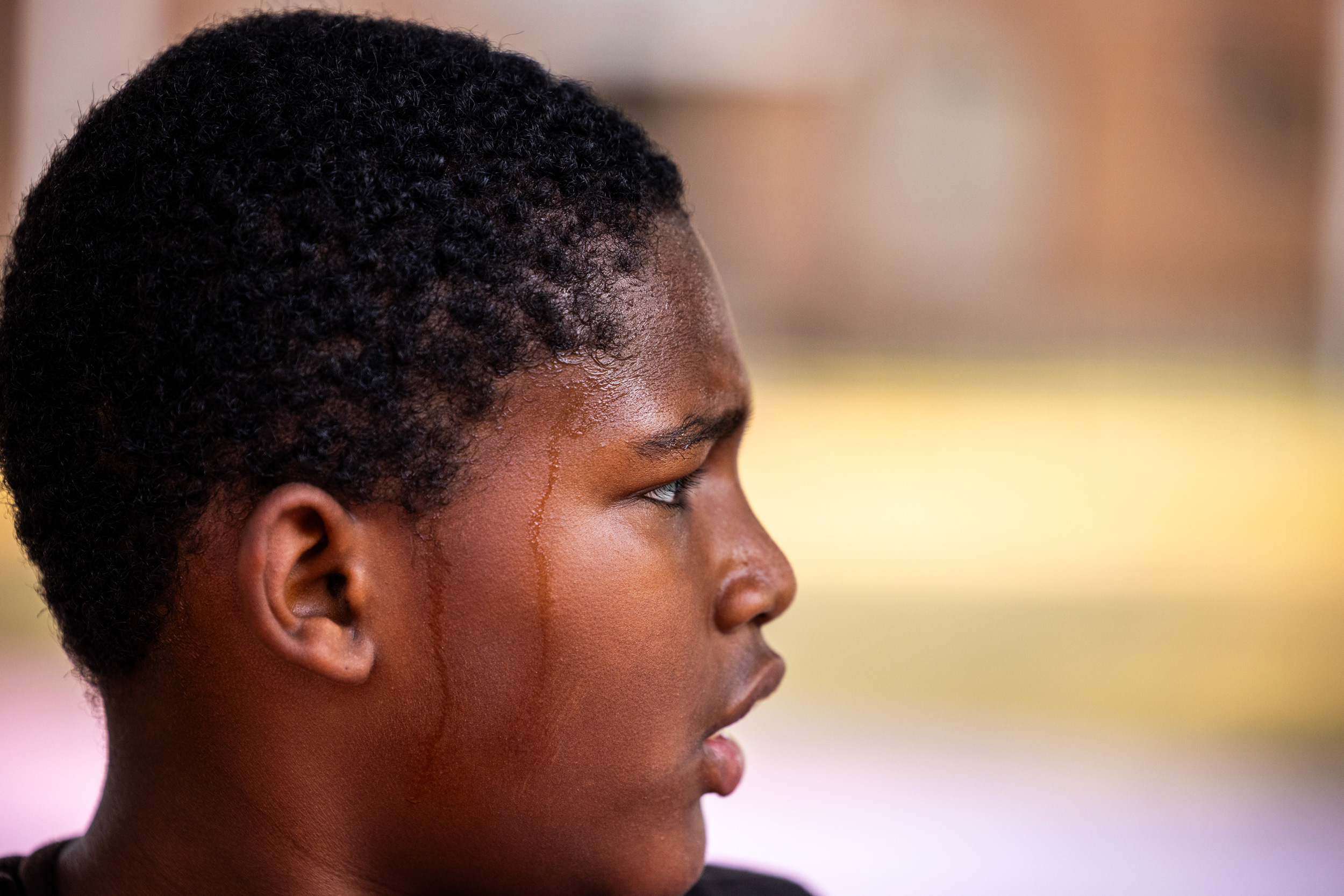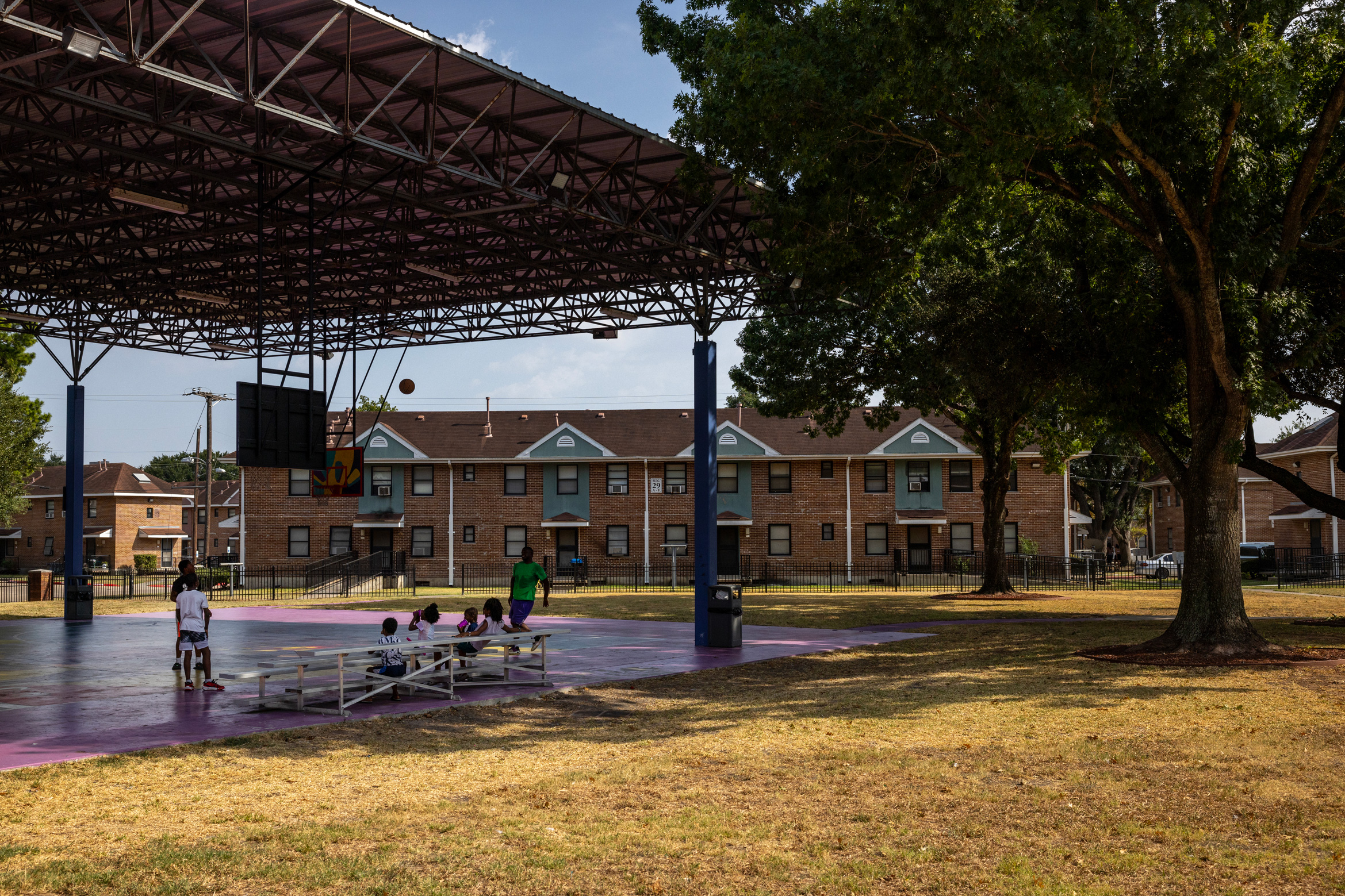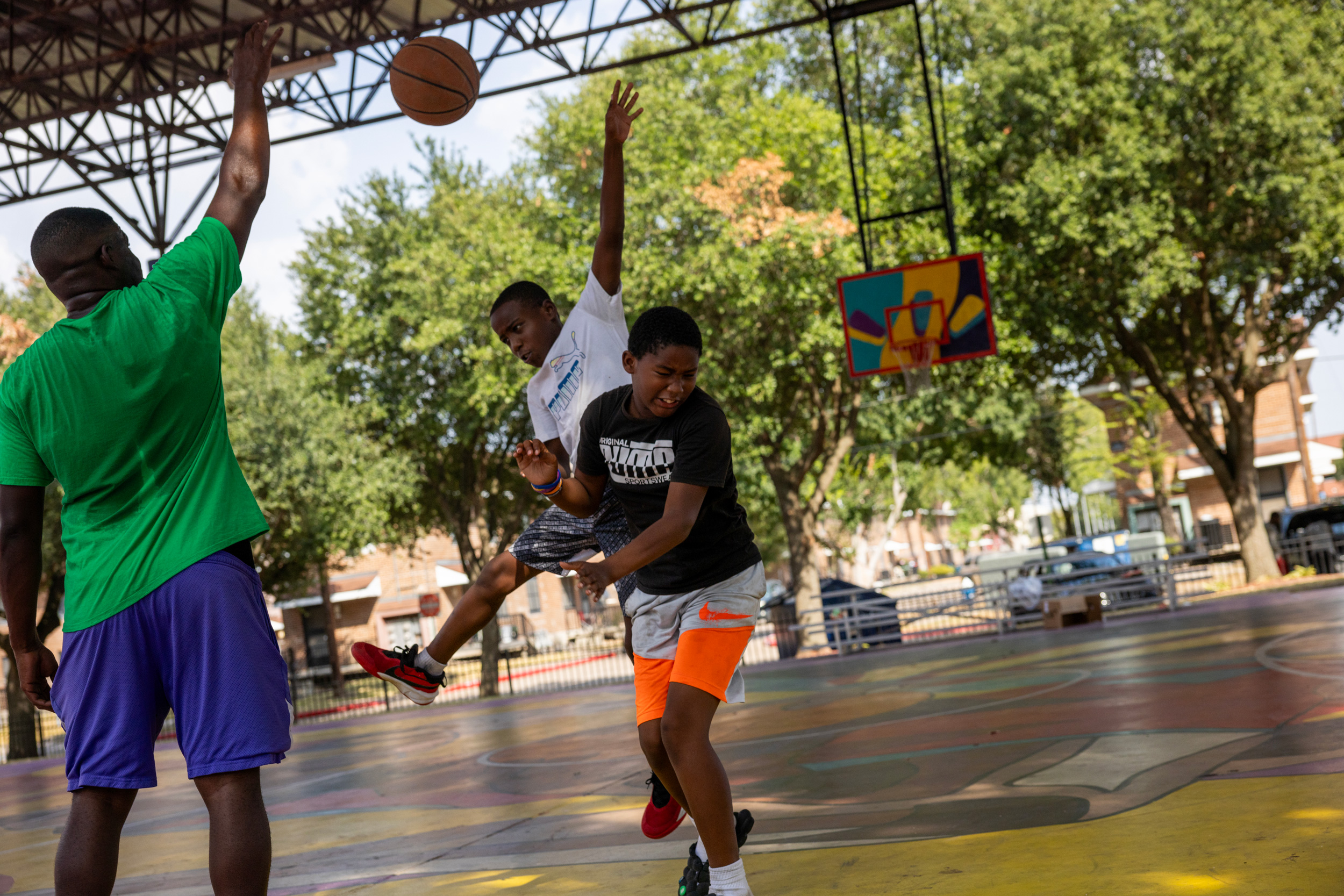|
Getting your Trinity Audio player ready...
|
It’s only when the sun finally begins to fall below the horizon that 9-year-old Derion Christten will head out to the basketball court to shoot hoops with his friends. Before that, the heat, which seeps into the concrete and bakes the cement until it's white hot, is not worth the game. So, this summer, he has stayed home a lot during the day – alone or with his two brothers, playing video games or watching TV.
Derion lives at Cuney Homes in Third Ward – Houston’s oldest public housing complex. His mother is anxious about the heat. Shera Gaskin, 41, tells her son to take breaks from playing basketball outside, or to come in and get water. Sometimes she simply says, “Not today, it’s too hot.”
The impact, she knows, is that her three boys are cooped up and bored, all camping out in one of the two rooms with air conditioning window units for the entire summer off from school. Nevertheless, Gaskin understands how dangerous the heat can be.
“I don’t think kids always realize how hot it is, but they just want to be outside and see their friends,” she said. “Sometimes I just don’t let them go outside. I mean, they can pass out.”
Gaskin is not alone in her concerns. The heat's long-term impact on children is a worry for parents in general – which is just one conclusion from a new study conducted by Texas researchers on heat, health and adaptation in lower-income communities of color.
From interviews with eighteen primarily Latino and female individuals, all from the same lower-income community in Austin, the authors found that heat has a wide-ranging effect on vulnerable populations that could have repercussions for months to years – even when temperatures drop back down. Months from now, when it’s cool enough to open the window at night or take a stroll at noon, they could still be paying the price from the heat of this past summer.
And this kind of impact is not just felt in Austin, said Kevin Lanza, assistant professor of environmental science at UTHealth Houston School of Public Health and lead author of the study. Austin is located in the “humid subtropical” climate zone, which is the same zone as Houston and most of the southeastern United States.
The qualitative study – which has fewer participants and more in-depth questions than quantitative studies – reached its participant cap when researchers began to hear the same responses again and again, Lanza explained. Concerns for children, stress on family relationships, physical and emotional exhaustion, and the need for more green space came up repeatedly in the study’s interviews.
“There could be a true lag effect of heat on one’s overall household wellbeing during the summer that could continue and gain inertia in the cooler months,” Lanza said.
Isolating impact of heat
In interviews conducted for the study, residents commented that the heat caused them and their children to become highly isolated and sedentary. Even in apartment complexes, where everyone is so close to each other, the heat keeps people inside and separated from their neighbors – deterring individuals from relying on each other or asking for help.
Children like Derion often pay the price.
In the study, residents expressed how worried they were for kids who did not have the opportunity to go outside and play, exercise or socialize. Rather, they were stuck inside, watching TV or playing video games.
“There are cascading effects of heat beyond when one is in the heat,” explained Lanza, who said that some of the women interviewed had spouses who worked outdoors in the construction industry, and, “when they came back home they were in poor moods. They weren’t able to play with their children.” Another woman expressed how she usually would take a walk to de-stress, but because of the heat, the family is cooped up inside.
The heat also creates a massive, long-term economic impact, said Jaime Gonzalez, the community and equitable conservation programs director for the Nature Conservancy in Houston.
“There’s an economic impact if the breadwinner passes away or can’t work for a while,” he said. “It has this kind of cascading inequity dimension to it. If someone’s on a tight budget and loses a day of work, or a week of work from the heat, then how does that play out over time?”
And some Houstonians have been feeling the heat at a disproportionate level. Communities with less access to air conditioning are also in the hottest parts of the city, where lower-income residents of color tend to live. These areas have a higher level of older and less-insulated homes as well, causing energy bills to go up. They are also where many people may rely on public transportation.
Residents who work construction or other outdoor jobs are more vulnerable to the impact from the heat.
In another 2011 study based in Houston, researchers found that more than a third of the 901 respondents expressed feeling too hot inside their homes despite having air conditioning.
“I don’t think much has changed when it comes to the numbers affected,” said Mary Hayden, behavioral scientist and research professor at the Lyda Hill Institute for Human Resilience at University of Colorado, Colorado Springs and lead author of the 2011 study. “We know that African Americans and Hispanics, Latinos, people with lower incomes, people who don’t have very good health, are most vulnerable to the heat. And it’s only getting hotter.”
‘You don’t want to lose your life’
Some people said they found ways to adapt to the heat, such as working in the early hours of the morning before the sun comes up. But for many residents, the reality is that avoiding the heat is impossible.
In early July, Derion’s mom landed in the emergency room after suffering from heat stroke, simply due to walking home from work because there wasn’t a convenient bus route.
But when she does take the bus, she said the walk to the nearest bus stop and the wait is suffocating. “There’s no shade, there’s no trees,” Gaskin said. “You don’t want to lose your life trying to do something we do every day, and that’s working and taking care of our families.”
Community leaders, along with organizations like the Nature Conservancy, have worked on solutions in Houston to bring green space to communities. This includes programs such as the Jefferson Early Learning Center in Alief, which created 4.5 acres of native prairie wetland and will plant over 200 trees, and Greener Gulfton, which will incorporate more biodiversity, shading structures and green bus stops.
In recent years, heat mitigation has become more of a priority in Houston. The city, county and other agencies have requested $50 million from the federal government for urban forestry, and the nonprofit Trees for Houston focuses on the issue. There is still work to be done, though, said Gonzalez.
“I don’t think anyone would say enough has been done to mitigate the heat,” he said. “But I think that the fire has been lit and people are trying to get things done.”





